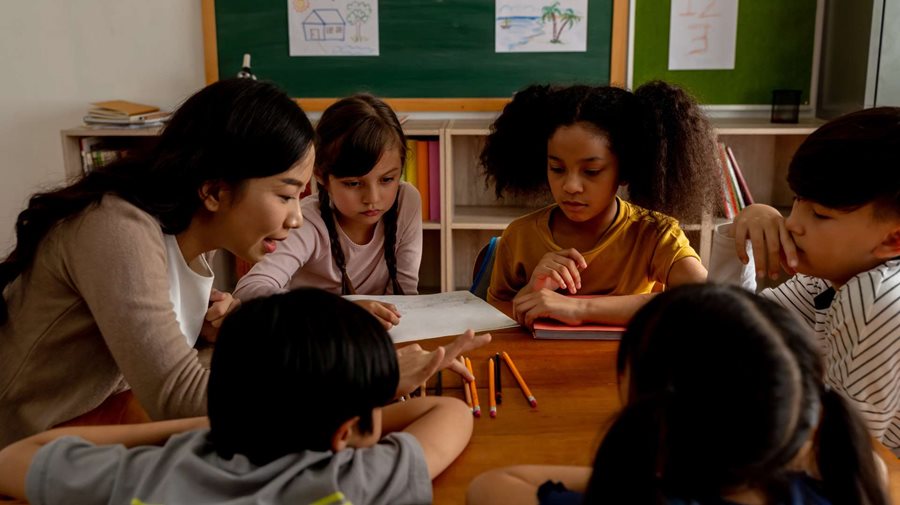Why Teacher Diversity Matters: Building Stronger Communities and Enriched Learning Environments
March 14, 2024
Teacher diversity is a fundamental aspect of creating an equitable and effective educational system. Building a diverse teacher workforce that reflects students and their communities provides immense social and educational value. It promotes cultural exchange and competency, supports students from underrepresented communities, and fosters trust with families.
Continue reading to learn more about the importance of representation in the classroom and strengthening community connections for improved educational outcomes.
The Importance of Representation in the Classroom
Reflecting the Student Demographics
Students benefit from seeing themselves represented by their teachers. According to the National School Boards Association, diverse teaching staff mirrors the multicultural nature of the student body, promoting a sense of belonging and inclusivity. Such representation is crucial in helping students from all backgrounds feel valued and understood.
When students see educators who represent their diverse backgrounds, it can profoundly impact their academic engagement, self-esteem, and overall sense of belonging.
A diverse teaching workforce also brings a wealth of different perspectives and experiences into the classroom, enriching the educational experience for all students. The diversity among teachers supports students in developing a deeper appreciation and understanding of different cultures, preparing them to thrive in an increasingly global society.
By promoting diversity in their teaching staff, schools can create a more equitable and supportive learning environment where every student has the opportunity to succeed.
Role Models and Mentorship
Educators who reflect their students' cultural, racial or linguistic identities can be exceptionally influential role models.
An op-ed in Education Week highlighted the profound impact teachers can have through their mentorship and guidance, emphasizing how shared experiences and perspectives enhance their ability to connect with and inspire their students. A deeper understanding fosters a more resonant and meaningful educational experience.
Enhancing the Learning Experience
Broadening Perspectives
Teachers from diverse backgrounds in educational settings enrich the learning environment by introducing a wide array of life experiences and perspectives. It fosters an atmosphere of open-mindedness and enhances critical thinking skills in students. By being exposed to different points of view, students become better equipped to navigate and understand the complexities of the world around them.
Culturally Relevant Pedagogy
Teachers with diverse backgrounds are often more adept at implementing culturally relevant pedagogy, which acknowledges and incorporates students' cultures in all aspects of learning. The approach gained by teacher diversity cultivates a more engaging and relatable educational experience.

Strengthening Community Connections
Building Trust and Understanding
When the teaching workforce mirrors the diversity of the community it serves, it cultivates a deeper sense of trust and mutual understanding. That reflection is not just about demographic similarities; it encompasses shared values, cultural insights, and lived experiences that resonate with the students and their families. A strong connection between schools and their communities is crucial. It’s a dynamic partnership where each side informs and enriches the other.
The strengthened connection creates an environment where educators are not just teachers but also community members who understand and appreciate the unique challenges and aspirations of their students. Students and parents feel more seen and valued, knowing their backgrounds and perspectives are represented within the educational system.
Such representation leads to more effective collaboration. Parents and community members become more engaged, contributing their knowledge and resources to support educational initiatives. Teachers equipped with a better understanding of their students' contexts can tailor their teaching strategies to be more relevant and impactful. That synergy amplifies the potential for student success as education becomes a collaborative effort that extends beyond the classroom walls.
Ultimately, when a school’s teaching workforce reflects its community, it does more than educate; it builds a bridge of empathy and understanding, paving the way for a future where every student is empowered to thrive academically and personally.
Encouraging Parental Involvement
Diverse teachers can better communicate and connect with parents from various cultural backgrounds. This inclusivity encourages more parental involvement in their children's education, which is a critical factor in academic achievement.
Diverse teachers bring a wealth of cultural understanding and linguistic skills instrumental in effective communication and meaningful connections with parents from varied cultural backgrounds. It bridges cultural gaps, ensuring parents feel seen, heard, and understood. When teachers can engage with parents in a culturally responsive manner, it breaks down barriers and creates a welcoming atmosphere that encourages parental involvement.
Parental involvement is a critical factor in academic achievement. Research has consistently shown that students are more likely to succeed in school when parents are actively engaged in their children's education. This engagement can range from helping with homework to attending parent-teacher conferences and participating in school-related activities.
Teachers with diverse backgrounds are often better equipped to understand the unique challenges and perspectives of families from different cultures. They can employ strategies that resonate with these families, fostering a stronger sense of community and collaboration between home and school. This collaborative environment not only enhances the educational experience for students but also empowers parents to take an active role in their children's learning journey.
Moreover, having a diverse teaching staff can serve as a powerful model of student inclusivity and acceptance. It helps create an educational setting that values and respects differences.
Get the Tools and Resources You Need
Despite the clear benefits, many schools face challenges recruiting and retaining a diverse teaching staff. Efforts to overcome these challenges include targeted recruitment, support for teacher education programs, and creating inclusive workplace environments.
National Math and Science Initiative offers tools to empower teachers and administrators. Our programs, including curriculum supports and forums, coaching, and several other programs and resources, help build strong communities of educators who work together, practice together, and reflect on their teaching and the needs of their students.
The programs and support offered by NMSI are designed to meet educators at the intersections where help is needed to become high-quality teachers who deliver better student outcomes.